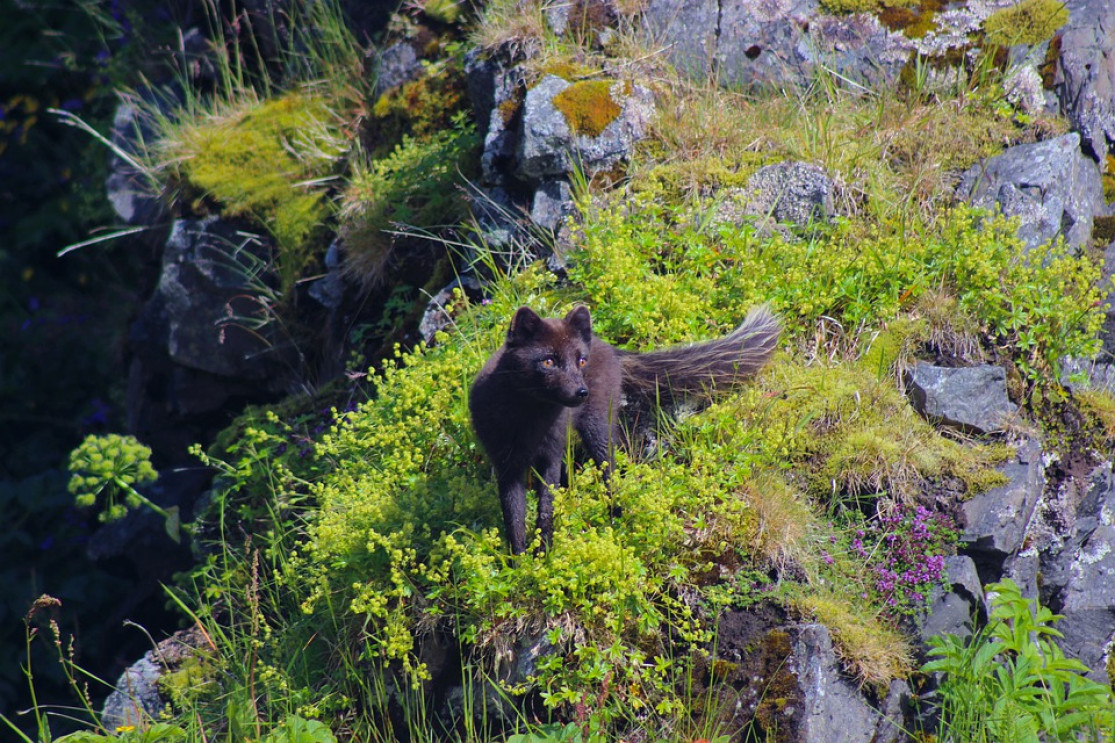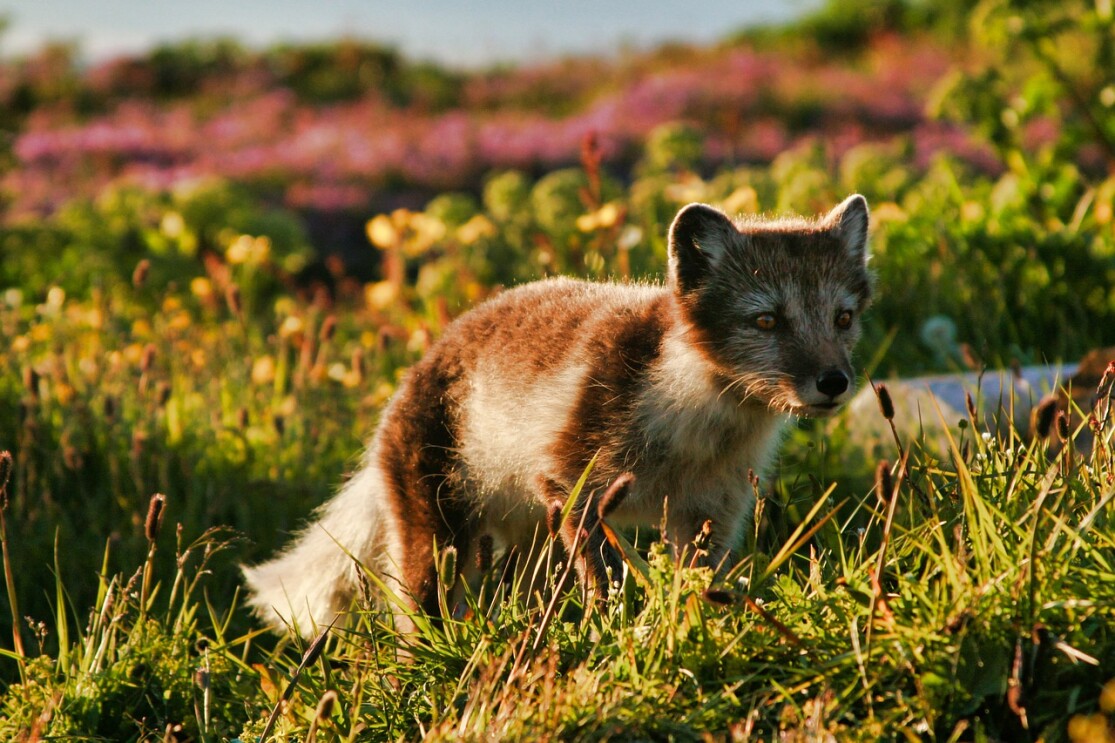Arctic Foxes in Iceland
The polar fox, or Arctic fox, is believed to have arrived in Iceland 10,000 years before our era and is the only native mammal in the country.
Even though the polar fox population is tending to decline in Iceland, the number is estimated at more than 7,000 individuals to date.
The fox is in fact considered a pest by farmers and ranchers and hunting in Iceland is allowed outside of nature reserves. Except hunters, the polar fox has no predators in the country.
The polar fox

Arctic fox in Iceland
The Arctic fox, known as "melrakki" in Iceland (literally: lowland dog), is smaller than the red fox we may be familiar with in France. As adults, they measure no more than 90 cm (30 cm at the withers) and weigh between 3 and 5 kg.
The "melrakki" is found all around the Arctic, including Greenland, Siberia, northern Canada, Alaska, Svalbard, northern Norway, and Iceland.
Thanks to its fur, the Arctic fox can endure extreme temperatures as low as -50 °C or even -60 °C, literally unaffected by the cold. Its small size also aids in maintaining body warmth.
The Arctic fox is known for its agility. Like us, it is clever and wary of strangers, and rarely appears when humans are around.
White fox and blue fox
Arctic foxes have two different coats:
- The white fox, which is white in winter and gray in summer.
- The "blue" fox that remains brown all year round but a little lighter in winter.
Both "types" of foxes belong to the same species, with only one gene distinguishing them. In most Arctic countries, white foxes make up 99% of the polar fox population.
However, in Iceland, it's different, especially in the western fjords where blue foxes represent nearly 80% of the foxes.
Housing and food
Foxes live in dens nestled in rugged terrain such lava fields covered with moss. These dens provide protection and a place to bring feed and shelter their young.
While Arctic foxes typically feed on lemmings, in Iceland they have had to adapt and eat whatever they can find: berries, sheep and reindeer carcasses, fish on the coasts, but especially birds and their eggs. As there are more birds on the coasts, foxes are more commonly found there.
They often feed at sunrise or sunset and are active hunters day and night.
Reproduction
Polar foxes have the peculiarity of being monogamous. Once they reach adulthood, a fox looks for a partner with whom it will stay for life.
Arctic foxes breed only once a year, between March and April, and the litters consist of 6 to 8 pups.
Where can you see Arctic foxes in Iceland?

White arctic fox
Arctic foxes can be found just about everywhere in Iceland, but they are often difficult to spot because their fur blends with rocks in the summer and with snow in the winter.
Additionally, as they are hunted, foxes are very timid, and it is challenging to approach them, except in nature reserves where they are safe.
In Iceland, there is only one place where the polar fox is entirely protected and, in fact, present in large numbers: the Hornstrandir Nature Reserve. This reserve has been protected since 1994, and it is completely uninhabited, making it an ideal habitat for a large polar fox population. The foxes here exhibit different behavior and are easier to approach due to their sense of security. If there is a place where you have a chance to see them, it is here.
Elsewhere in Iceland, foxes are most commonly found near bird cliffs, particularly in the west on the Snaefellsnes peninsula and in the western fjords. In the extreme northeast, a very sparsely populated area, there are many polar foxes, especially on the Melrakkaslétta peninsula, which lives up to its name, as in Icelandic it means "the plain of the polar fox."
Arctic Fox Center

Arctic fox and cubs at Hornstrandir in Iceland - giedriius @fotolia
The Arctic Fox Center is a museum dedicated to the polar fox located in Súðavík in the western fjords, near the town of Ísafjörður. More than a museum, it is a research center for the Arctic fox.
Scientist Pall Hersteinson, following his thesis on this particular fox, went to Hornstrandir to study them and in 2010 he decided to open this center in Súðavík to share his passion.
Since then, the center has continued its research and has provided valuable insights into foxe habitats and behavious, including statistics to track their number, sex, height, weight, diet, and diseases.
The money generated by museum entries is used to finance this research.
Practical information:
Opening times:
- From June to August - every day from 10:00AM to 6:00PM.
- From May to September - every day from 10:00AM to 2:00PM.
- From October to April - by appointment
Telephone: + 354 4564922
email: melrakki@melrakki.is
Website: http://www.melrakki.is
Rate: ISK 1,200 per adult, free for children under 14